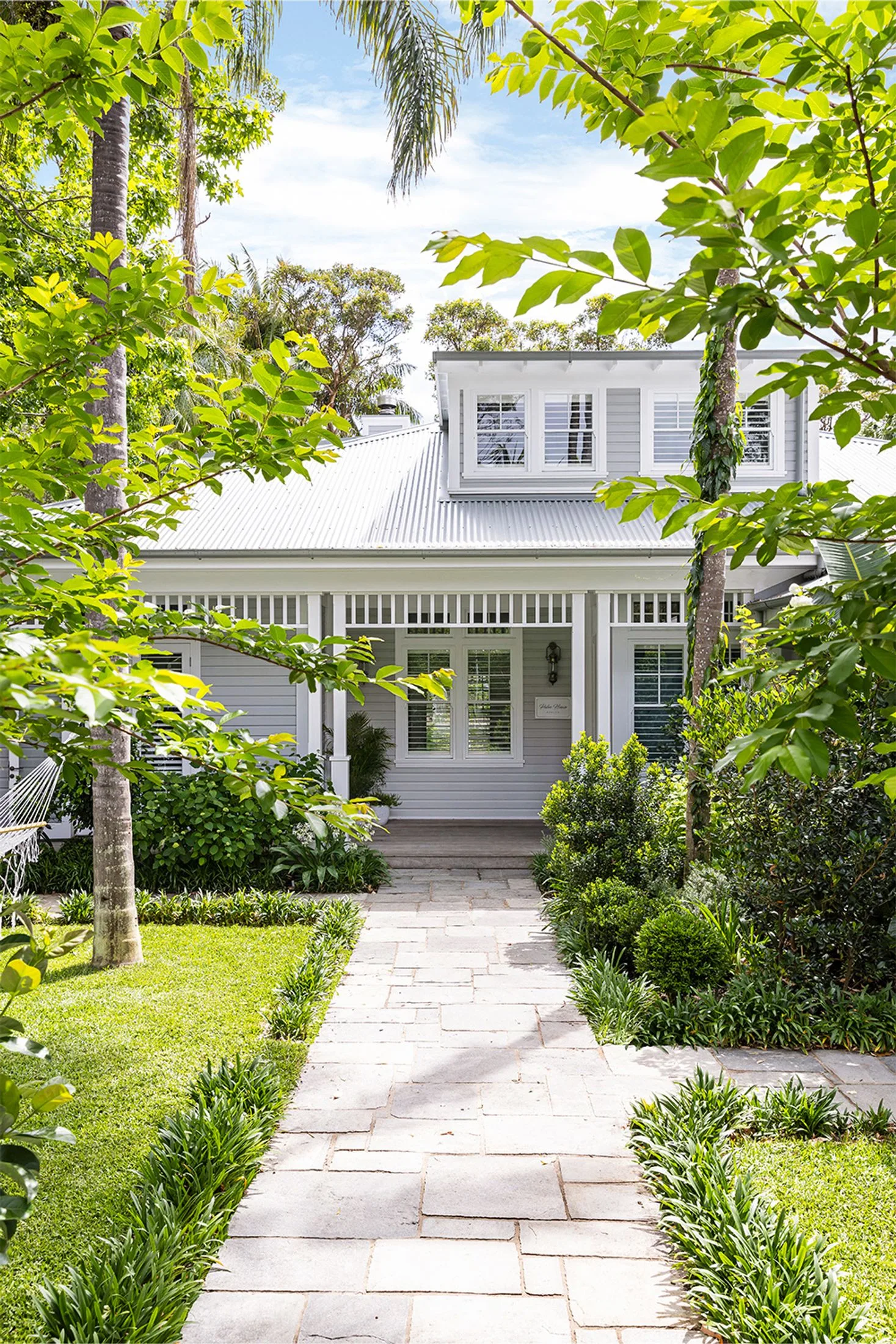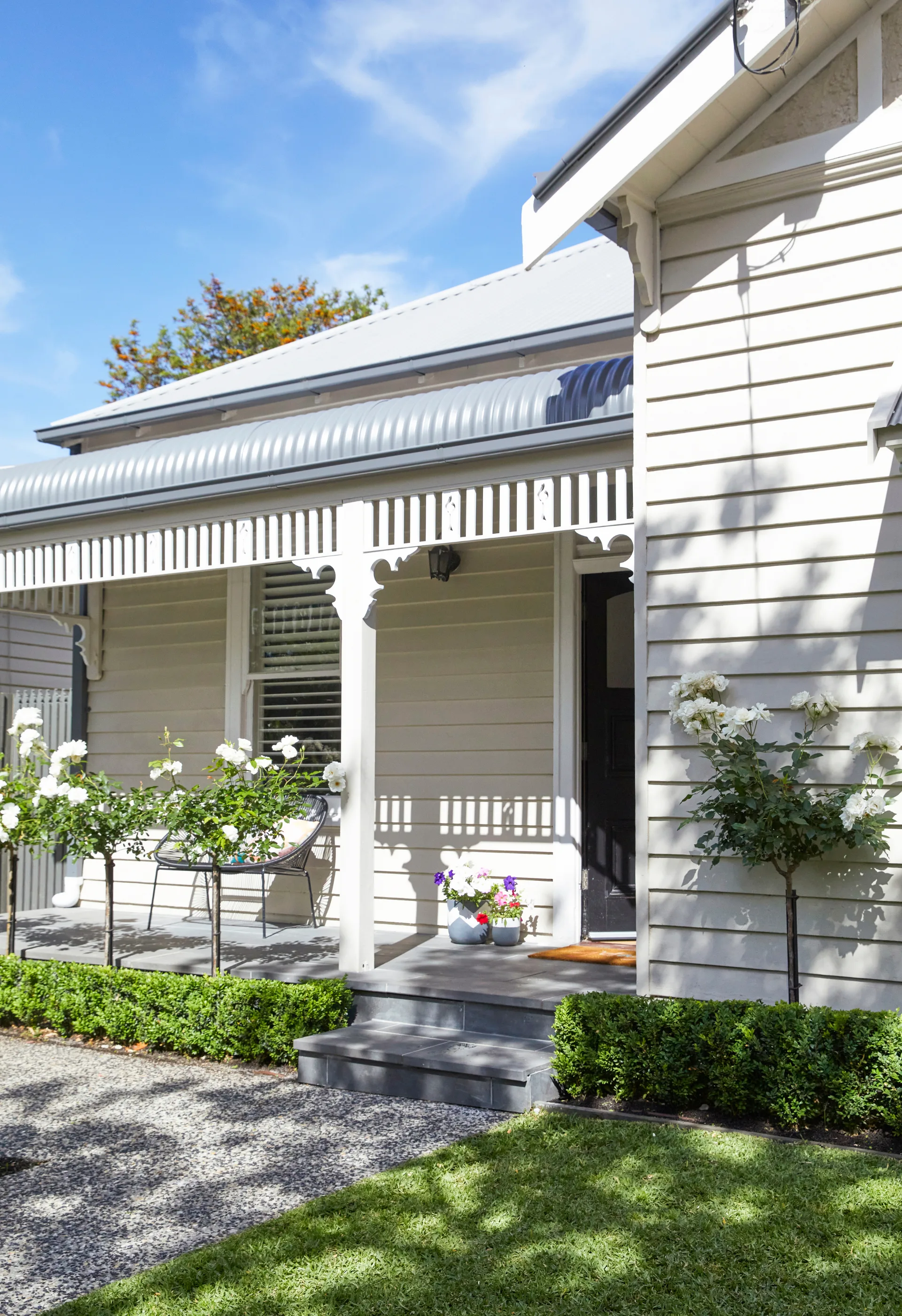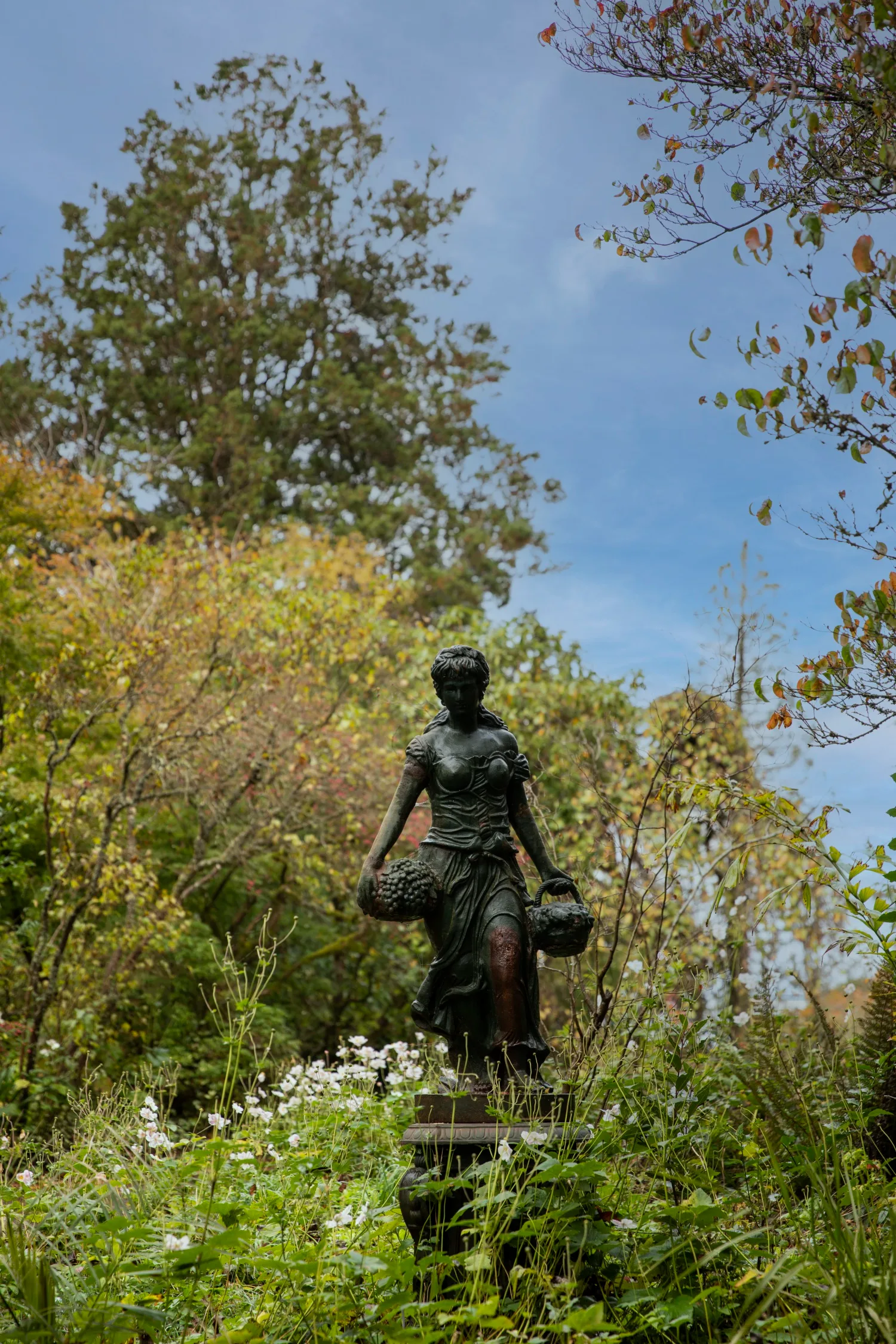Green and white gardens are, quite simply, captivating. The effect of crisp, white-flowering plants against a backdrop of deep green, manicured hedges and silvery foliage can be just as arresting as a wild, colourful cottage garden barely contained by a picket fence.
Garden designer Inge Jabara of Inge Jabara Landscapes has created many green and white gardens over the years, and has come up with a convincing theory as to why they’re so popular. “They go with a love of a white kitchen, a white couch and white walls in a home,” she says. But the main reason the look of white blooms against a verdant backdrop is so enduring, she believes, boils down to the atmosphere the colour combination creates. “It’s calm, refreshing and uncomplicated. White and green are so simple they feel harmonious together.”

Paddy Milne, director of The Scape Artist and host of Selling in the City also regularly works within a palette of strictly white and green. It’s a style anyone can emulate, he says. “Green and white is one of the simplest combinations to get right, and you can create a peaceful and serene garden that compliments almost any architectural style,” he says.
Is your heart set on creating an elegant garden featuring only white-flowering plants? Here, Inge and Paddy share their tips for establishing a green and white garden that’s anything but boring, and reveal their top favourite white-flowering plants.
The White Garden at Sissinghurst Castle in Kent is one of the most well-known gardens of this style. It was designed by writer, poet and gardener Victoria ‘Vita’ Sackville-West who understood that by restricting the colour palette she would have to become more creative with layering foliage and textures. Key plants used at Sissinghurst include: dahlias, Japanese anemones, gladioli, irises, hydrangeas, and almond trees. For more information, visit The National Trust UK website.
Famous white garden: Sissinghurst Castle
Planning a green and white garden
When Paddy was called to design a garden for a newly built home in one of Ballarat’s most historic streets, it was important to create a sense of old-world charm to contextualise the home and complement its black and white facade.
Going with a harmonious green and white garden just made sense. “It has a timeless appeal that gave this front yard a classic, elegant look,” he says, adding, “Green plants and white flowers can soften the harsh lines of architecture, creating a more inviting and picturesque facade.”
Start with a glorious green canvas
It’s easy to fall into the trap of designing a green and white garden that’s all about the flowers, but Paddy prefers to begin by establishing a canvas of greenery.
“The green-on-green elements are the most important. Green has and always will be nature’s canvas,” he says. “Use it freely for the most luscious natural backdrop.”

Inge also likes to surround white-flowering plants with a supporting cast of lush evergreen shrubs. Her top three go-to plants for this purpose are: Portuguese laurel (Prunus lusitanica, ‘Miles Choice’ (Laurus nobilis) and tractor seat plant (Ligularia reformis).
“Include a range of large leaf foliage and small, thin leaf foliage,” says Inge. “Opt for plants with dark green foliage because white flowers against bright green can make the leaves appear neon. I also always make sure that there’s a hedge somewhere (whether it be to hide a fence or a few box hedge spheres to break things up) because white and green suits a formal style and hedges create formality.”

Lush layers
When selecting plants, always think about creating layers based on the height, shape, size, colour and texture of each plant. The layer many beginner gardeners forget altogether is the groundcover, says Paddy.
“It’s often the forgotten child, but don’t leave groundcovers behind. I like to think of the ground layer as a mosaic, and have two or three groundcovers interacting with each other and spread from the front of the bed toward the middle, under the mid-sized shrubs,” he says.

Perfect perennials
“I love perennials for their bust of energy,” says Paddy, who then builds upon an evergreen base by adding in a mix of several flowering plants.
“I like the variety of lots of different flowering plants together,” he says. In the Ballarat garden, the key flowering plants are: hydrangea ‘Annabelle’, agapanthus ‘Snowball’, Japanese anemone and salvia.

Popular white flowering perennial plants
- Agapanthus ‘Snowball’
- Azalea White Bouquet
- Camellia
- Gardenia
- Lavender (Lavandula angustifolia ‘Alba’)
- Magnolia
- Rose (Iceberg Floribuna Rose)
Planting en masse
One of the simplest ways to give a green and white garden a formal quality is by repeating the same plant throughout a garden. It’s a tip Inge implemented in her very own garden. “The one hero I look forward to each year in my garden is the mass planting of hydrangea ‘Annabelle’.”
Landscapers’ pick: Top 5 white flowering plants

01
Japanese Windflower
(Anemone hupehensis japonica Alba)
Paddy Milne’s favourite white-flowering plant is the Japanese Windflower (also known as Japanese Anemone), which blooms from late summer and into autumn. “They offer a stunning autumn show,” he says. “They move gently in the breeze at the right height to eye ball them.” This flower grows up to 1.2 metres tall and can thrive in both full sun and under trees in the semi shade.

02
Hydrangea ‘Annabelle’
(Hydrangea arborescens ‘Annabelle’)
Mass planting works well in a green and white garden, and Inge says one of her favourite white-flowering plants to work with is Hydrangea ‘Annabelle’ for it’s large, lacy plumes and felt-like leaves. “I have this one planted en masse in my garden,” she says. Annabelle’s snowball flowers can reach up to 30cm in diameter and prefer a spot with dappled shade.

03
‘Himalayan’ dogwood
(Cornus capitata)
“This is a stunning tree with beautiful white flowers,” says Inge. The ‘Himalayan’ dogwood is an evergreen shrub that can grow up to 8-metres. It flowers profusely, and its spreading habit forms a gorgeous, shady canopy. It produces small berry-like fruit that attracts birds.

04
Madagascar jasmine
(Stephanotis floribunda)
Jasmine is one of the most popular white flowering plants, beloved for its fragrance as well as its ability to climb and cover ugly fences quickly. Inge’s favourite variety is the Madagascar jasmine. “Oh, I love this vine. It’s evergreen and has a stunning white flower with a scent that takes you on holidays,” she says. It produces glossy green leaves and has tubular, white flowers.

05
Wedding cake tree
(Viburnum plicatum)
“This stunning structured plant has flowers that emanate from the top of the branches, and when it’s in full flower it looks like a wedding cake,” says Inge. Native to Japan, this shrub can grow up to three metres tall and has tiered branches that create a structured, cascading effect in the garden. It produces masses of small white flowers and the leaves have a gorgeous, pleated appearance. They prefer a cooler climate and like a partly shaded or dappled shade position.
 Adobe Stock
Adobe Stock



